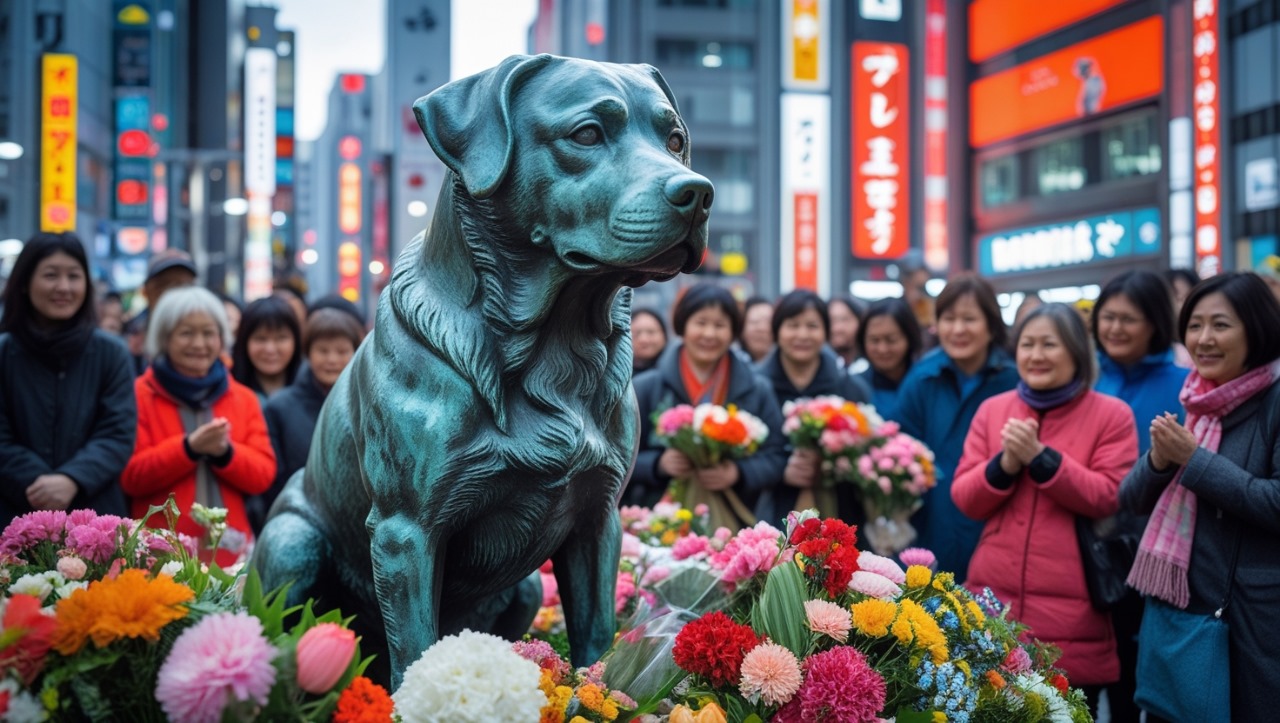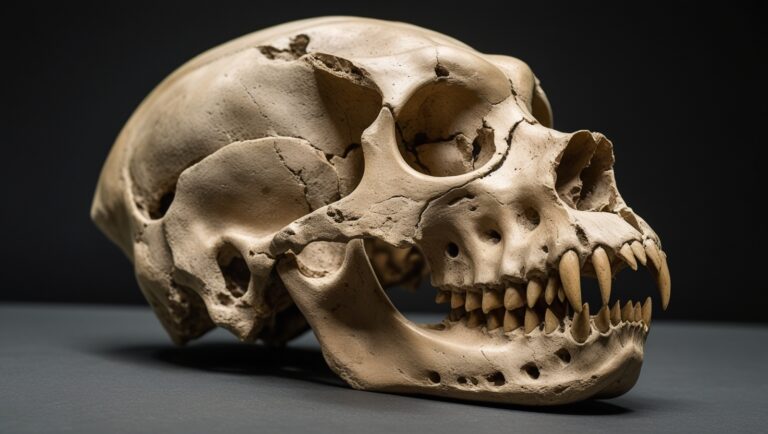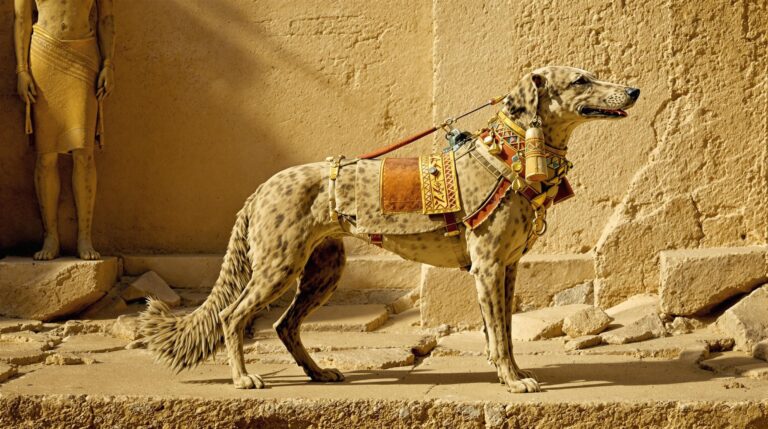Hachikō: The Loyal Dog of Japan

Introduction
Among the many stories of canine devotion, one stands out not only as a symbol of unwavering loyalty but also as a national treasure of Japan. The tale of Hachikō, an Akita dog who waited nearly ten years at Tokyo’s Shibuya Station for his deceased owner, continues to inspire millions across generations. Hachikō is not simply a loyal dog; he has become a cultural icon of faithfulness, devotion, and enduring love. From historical documentation to film adaptations and international monuments, Hachikō’s story endures because it captures the timeless human desire for unconditional loyalty.
The Birth of Hachikō
Hachikō was born on November 10, 1923, in Ōdate, a rural town in Akita Prefecture, northern Japan. Belonging to the Akita Inu breed, he came from a distinguished lineage of dogs known for their strength, endurance, and protective nature. Akitas were originally bred for hunting bears and guarding homes, and they were prized for their noble demeanor and fierce loyalty. Registered as Hachikō, with the kanji characters meaning “eighth prince,” his name suggested both luck and reverence—a fitting title for a dog destined to become a legend.
also read this Famous Historical Dogs
Meeting Professor Ueno
In 1924, Hachikō was adopted by Professor Hidesaburō Ueno, an esteemed scholar at the University of Tokyo’s Agriculture Department. Living in the Shibuya area, Professor Ueno quickly developed a profound bond with Hachikō. Every morning, Ueno would walk with Hachikō to Shibuya Station, board the train to the university, and return in the evening to find Hachikō waiting faithfully at the station’s west exit. This daily routine became a visible testament to their close relationship and soon attracted the attention of commuters and station staff.
A Daily Ritual: Waiting at Shibuya Station
Rain or shine, Hachikō arrived punctually at Shibuya Station each afternoon, tail wagging, to greet Professor Ueno. Locals began to recognize the pair, and Hachikō became a familiar sight to commuters. While most viewed it as a sweet routine, few could have imagined the depth of loyalty that would manifest following a tragic turn of events. The public’s early awareness of Hachikō’s schedule laid the groundwork for the nationwide recognition that would later emerge.
Tragedy Strikes: Professor Ueno’s Sudden Death
On May 21, 1925, just a year after adopting Hachikō, Professor Ueno collapsed and died of a cerebral hemorrhage while lecturing at the university. He never returned to Shibuya Station. Yet Hachikō, unaware of the permanence of this absence, continued to wait at the same time every evening, expecting his beloved owner to return. Despite attempts by relatives and neighbors to care for him, Hachikō insisted on returning to the station daily. His vigil had begun.
Years of Vigil: Nine Years of Loyalty
For the next nine years, Hachikō maintained his daily watch at Shibuya Station. He appeared precisely when the train was due, regardless of weather, illness, or the passing of time. His act was not performative; it was instinctive loyalty rooted in an unbroken emotional bond. He became a fixture in the neighborhood. Vendors and railway workers fed and protected him, commuters greeted him, and children played near him. What started as a personal act of waiting grew into a national allegory for devotion and love.
The Role of the Media and National Attention
Although known locally, Hachikō’s story only became national news after a 1932 newspaper article titled “Faithful Old Dog Awaits Return of Dead Master” appeared in the Asahi Shimbun. The article was written by one of Professor Ueno’s former students, who had observed Hachikō’s vigil and was moved by the depth of his loyalty. The story resonated with the public, especially during a time when Japan was emphasizing values like discipline, loyalty, and sacrifice. Overnight, Hachikō became a symbol of national virtue, receiving food donations, visitors, and even official honors.
Hachikō and the Symbolism of Loyalty in Japan
Loyalty holds a special place in Japanese culture, deeply rooted in the Bushidō code—the way of the samurai—which emphasized fidelity to one’s master above all else. Hachikō, without intent or ceremony, embodied this ideal perfectly. His continued presence at Shibuya became more than a personal act—it was now seen as a reflection of the spiritual discipline that underpinned Japanese national identity. To many, Hachikō was not merely a dog but an ideal citizen.
The First Hachikō Statue at Shibuya Station
Moved by his story, the Japanese government and public supporters commissioned a statue of Hachikō to be placed at Shibuya Station. Sculpted by Teru Andō, a renowned artist, the bronze statue was unveiled in April 1934, with Hachikō himself attending the ceremony. Crowds gathered to honor the living legend. The statue became a popular meeting point and a site of reflection on themes of devotion, loyalty, and remembrance. Hachikō’s fame extended far beyond Tokyo, and he became a national icon even during his lifetime.
Wartime Destruction and Reconstruction
Unfortunately, during World War II, the original statue was melted down to repurpose the metal for the war effort, like many public artworks of the time. However, Hachikō’s legacy proved resilient. After the war, the sculptor’s son, Takeshi Andō, recreated the statue. In August 1948, the new version was unveiled at the same spot outside Shibuya Station. The reinstallation was more than artistic—it was symbolic of Japan’s postwar recovery and renewed commitment to the values Hachikō represented.
Hachikō’s Death and National Mourning
Hachikō passed away on March 8, 1935, near a street in Shibuya. His body was found lying peacefully, still close to the station where he had waited for so many years. His death triggered a wave of public grief. Schoolchildren wept, flowers were laid, and his story was reprinted in major newspapers. A funeral was held at Shibuya Station, and Hachikō’s remains were preserved and put on display at the National Museum of Nature and Science in Ueno. His organs were buried beside Professor Ueno in Aoyama Cemetery—a gesture cementing their eternal bond.
The Akita Breed and National Pride
The Hachikō story significantly boosted the popularity of the Akita breed, which had already been designated a Natural Monument of Japan in 1931. These dogs, known for their loyalty, independence, and intelligence, were seen as ideal symbols of national character. The story of Hachikō helped elevate the Akita from a regional breed to an internationally admired companion, even influencing foreign dignitaries. U.S. President Herbert Hoover and later Helen Keller both owned Akitas, with Keller receiving one as a gift during her visit to Japan in 1937.
Hachikō’s Impact on Japanese Popular Culture
Since his death, Hachikō has been immortalized in novels, poems, paintings, television dramas, children’s books, and merchandise. His image appears on everything from postage stamps to advertisements. In Japanese schools, his story is included in moral education textbooks, used to teach concepts of duty, perseverance, and emotional resilience. Artists and authors continually revisit the Hachikō narrative to explore themes of loss, love, and loyalty in the modern world.
The 1987 Japanese Film “Hachikō Monogatari”
In 1987, the film “Hachikō Monogatari” was released, offering a dramatized yet faithful retelling of Hachikō’s life. It became a commercial and critical success in Japan, moving audiences with its emotional storytelling and historical accuracy. The film contributed significantly to the revival of interest in Hachikō’s story during the 1980s and solidified his role as a national folk hero.
Hollywood’s “Hachi: A Dog’s Tale” (2009)
The story gained international attention with the release of “Hachi: A Dog’s Tale”, a 2009 American adaptation starring Richard Gere. The film relocated the story to the U.S. but maintained the emotional core of Hachikō’s devotion. While cultural specifics changed, the film emphasized the universality of love and loss, bringing Hachikō’s story to new audiences worldwide. Its success proved that Hachikō’s story resonates across languages, cultures, and borders.
Tourism and the Shibuya Statue Today
Today, Hachikō’s bronze statue remains a landmark in Tokyo, situated just outside Shibuya Station’s Hachikō Exit. Tourists from around the globe visit to take photos, leave flowers, or simply pause in reverence. The statue has become one of Tokyo’s most popular meeting spots and is now accompanied by a detailed plaque explaining Hachikō’s story in multiple languages. A second statue, placed inside the University of Tokyo, features Hachikō reunited with Professor Ueno—offering a poignant visual closure to their shared story.
Hachikō Day and Public Commemorations
Each year on April 8, a memorial ceremony is held at the statue, organized by the Loyalty Society and attended by schoolchildren, city officials, and Akita dog enthusiasts. The ceremony includes offerings of flowers, speeches about loyalty and devotion, and silent moments of respect. These events ensure that Hachikō’s memory is not merely historical but actively preserved as part of modern Japanese cultural life.
Hachikō in Schools and Moral Education
Japanese children often learn Hachikō’s story as part of their ethical studies, known as dōtoku. The tale is used to cultivate a sense of empathy, duty, and respect for loyalty. Teachers cite Hachikō as an example of how devotion can transcend time and death. Students write essays, create artwork, and even participate in class plays reenacting the story. Hachikō thus continues to shape the moral imagination of future generations.
Global Influence and Canine Loyalty Tributes
Hachikō has inspired similar tributes around the world. In Scotland, the story of Greyfriars Bobby, another loyal dog, draws comparisons to Hachikō. Statues and memorials referencing Hachikō’s legacy have appeared in places as far as New Jersey, USA, and Ōdate, his birthplace. These installations demonstrate that dog loyalty is a universally admired virtue, and that Hachikō serves as an international ambassador for the human-animal bond.
Conclusion
The story of Hachikō endures not because it is extraordinary, but because it is profoundly human. In an age where relationships can be fleeting, Hachikō reminds us of what it means to be truly loyal—to wait, to hope, and to love without condition. His statue at Shibuya is more than a tribute to a dog; it is a monument to the ideals that bind us as people: devotion, memory, and the quiet power of unspoken love. Hachikō’s legacy remains a testament to the eternal promise of fidelity, and his paw prints will forever mark the heart of Japan.





